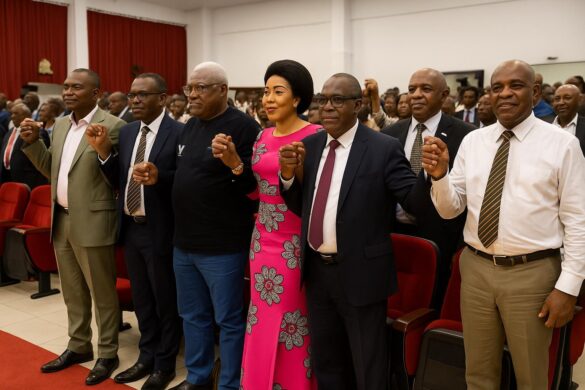Heritage at 145 Years
In the cool shade of the Pierre Savorgnan de Brazza Memorial, officials, academics, and students gathered last week to mark the 145th anniversary of Brazzaville, a city once known as N’Cuna Mfoa. The event took place in the Denis Sassou-N’Guesso auditorium, symbolically linking past and present in the capital’s ongoing story of resilience.
The event, designed as a cultural and scientific day, was opened by the memorial’s director, whose opening remarks set the tone, stressing that collective memory is more than a ceremony; it’s a strategic resource for planning the city’s next century.
The director quoted historian-philosopher Théophile Obenga, stating that no living people reject their past. She emphasized that sidelining memory leaves societies vulnerable, while recognizing heritage creates solid foundations. In her words, decolonizing minds means recovering narratives capable of steering Brazzaville towards inclusive and assured development in peace.
The gathering coincided with the memorial’s own 19th anniversary, a milestone encouraging introspection. Opened on October 3, 2006, the institution preserves documents, artifacts, and oral testimonies from Pierre Savorgnan de Brazza’s expedition and the city that followed. For the director, the dual celebration required both critical reflection and creative engagement for the future.
Speakers Link Past and Future
Three academic lectures structured the day’s scientific segment, each exploring Brazzaville’s identity from distinct angles. One professor began with an exploration titled “Knowing and Describing Brazzaville through Congolese Rumba,” revealing how popular lyrics have chronicled urban change, affectionately shortening the capital to Béa or simply Brazza.
Another professor followed, questioning the historical sources that trace the transformation of N’Cuna Mfoa, an indigenous riverside settlement, into a modern administrative center. He stressed that map evidence, colonial archives, and oral histories must be read together; otherwise, development plans risk neglecting the social fabrics that preceded urban planning.
A doctor concluded the panel by urging participants to transform academic knowledge into actionable policies. Referring to civic education programs, he argued that integrating local history into classrooms can nurture civic pride, deter vandalism of heritage sites, and inspire entrepreneurial tourism ventures around the Congo riverfront area.
The three academics converged on one message: memory thrives when translated into song, map, or lesson, but ultimately requires political guardianship. Their consensus resonated with the director’s earlier call for a “memory renaissance,” positioning academia as an indispensable ally for planners and community organizers across Brazzaville’s nine districts.
Congolese Rumba as an Urban Archive
The rumba presentation sparked lively conversations afterward, drawing musicians and historians into a passionate debate. It illustrated how the chorus “Brazza na biso” — our Brazza — captures a citizen voice often absent from administrative documents, and how rumba lyrics can identify neighborhood landmarks long before official gazettes record street names or district boundaries.
